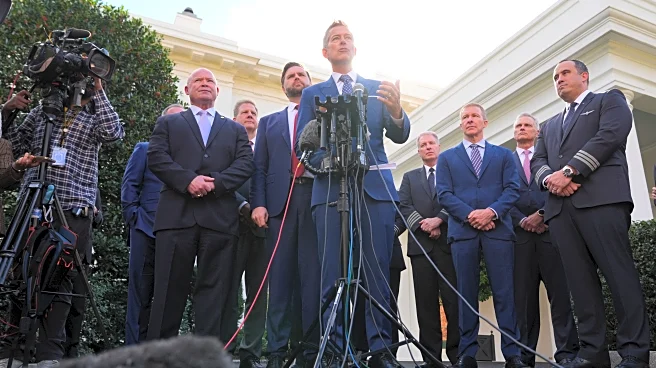What's Happening?
Foreclosures in the United States surged in October, with new data indicating a 20% year-over-year increase in foreclosure starts. Real estate analytics firm ATTOM reported that 36,766 properties had foreclosure filings,
marking a 3% rise from September and continuing an eight-month trend of annual increases. The increase in foreclosure starts was most pronounced in states like Florida, Texas, and California. Completed foreclosures, or REOs, rose by 32% compared to October 2024, with Pennsylvania and New York City being notable areas of high foreclosure activity. This trend is occurring amidst high mortgage rates, record consumer debt, and a weakening job market. In response to the housing affordability crisis, President Donald Trump has proposed the introduction of 50-year mortgages, a move aimed at reducing monthly payments but potentially increasing long-term costs for buyers.
Why It's Important?
The rise in foreclosures highlights the ongoing challenges in the U.S. housing market, exacerbated by high borrowing costs and economic uncertainty. President Trump's proposal for 50-year mortgages could offer immediate relief in terms of lower monthly payments, but it may also lead to higher overall costs and slower equity accumulation for homeowners. This development is significant for the real estate industry, financial institutions, and potential homebuyers, as it could influence mortgage lending practices and housing market dynamics. Economists have expressed concerns that such long-term loans might not be the most effective solution for housing affordability, suggesting alternative measures like reversing tariff-induced inflation and promoting homebuilding to expand housing supply.
What's Next?
The proposal for 50-year mortgages is likely to spark debate among policymakers, economists, and industry stakeholders. Discussions may focus on the potential benefits and drawbacks of such loans, including their impact on homeownership rates and long-term financial stability for borrowers. Stakeholders may also explore other strategies to address housing affordability, such as regulatory changes to encourage homebuilding and adjustments to monetary policy to stabilize mortgage rates. The real estate market will be closely monitored for changes in foreclosure rates and housing prices, as these factors will influence future policy decisions and economic forecasts.
Beyond the Headlines
The introduction of 50-year mortgages raises ethical and financial questions about the long-term implications for homeowners. While they may provide short-term relief, these loans could lead to increased financial burdens over time, affecting generational wealth and economic mobility. Additionally, the proposal reflects broader economic challenges, including the impact of tariffs and inflation on housing costs. The debate over mortgage terms may also highlight cultural attitudes towards homeownership and financial planning, prompting discussions about sustainable housing solutions and economic equity.













